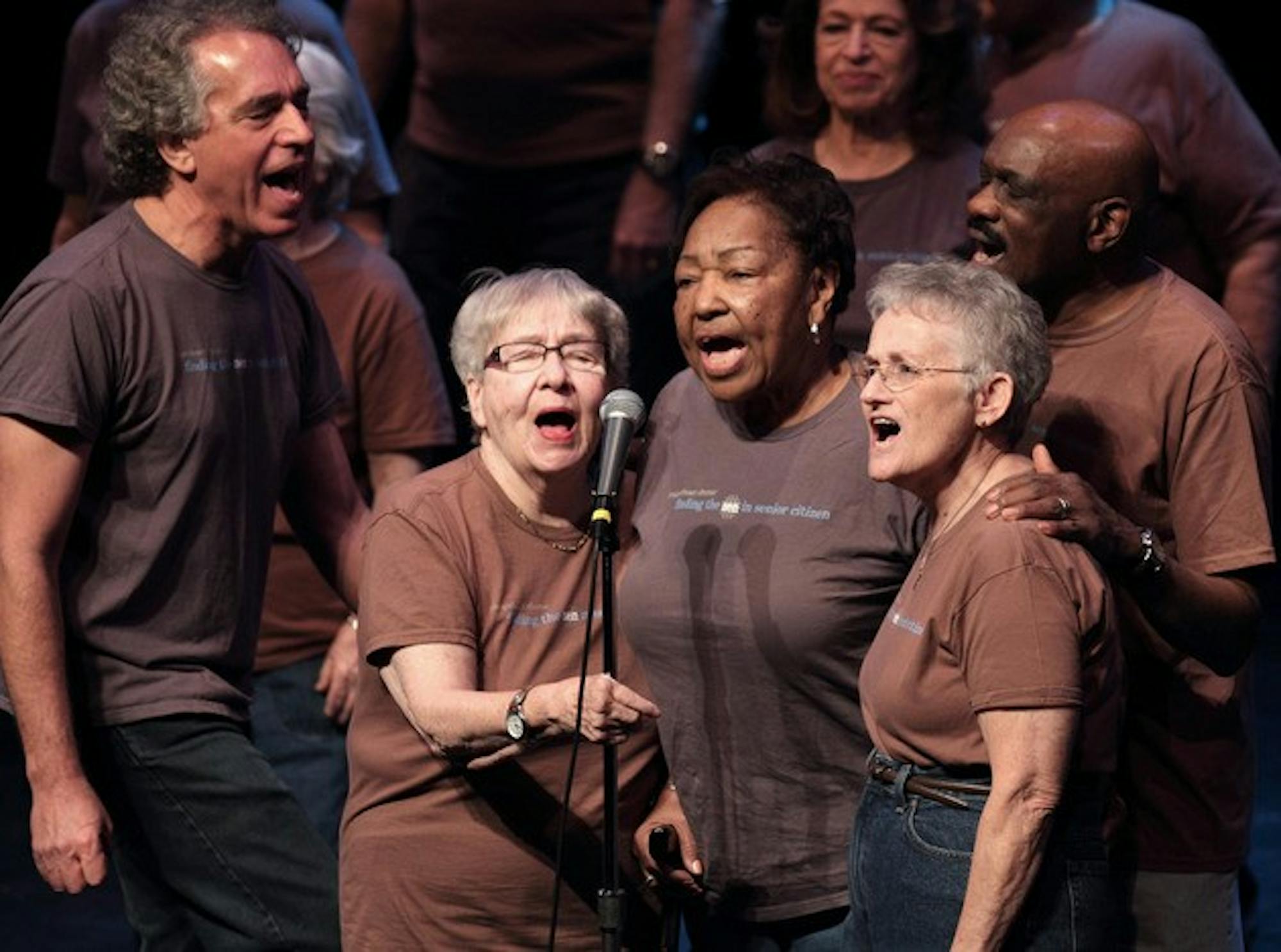The group began in the 1980s when a community group of elderly people gathered to sing. Their usual piano player was unavailable during one of their meetings, and a younger player took her place to lead the chorus. The replacement pianist played newer music that he was familiar with, and a startling new fusion was born.
"I only knew one song on the piano so I played it over and over," Bob Cilman, director of the Young@Heart Chorus, said.
That song was "Let It Be" by The Beatles. Suddenly, a room full of World War I veterans were singing music from their children's generation. Music that they had heard before, but only when they told their children to turn it down or better yet, turn it off, according to current chorus singers Patricia Ervin and Claire Couture.
Despite chorus members' initial wariness and misunderstandings about contemporary music, the chance encounter has developed into a full-fledged performance group. Cilman is still directing elderly people in songs from his generation and from the newer waves of music that have succeeded it.
"I really liked the way ["Let It Be"] sounded from them," he said. "It was really refreshing to hear music I grew up on in such a different way, so we continued playing with it."
The Young@Heart Chorus now enjoys international renown, particularly after the release of a documentary about the chorus in 2007, titled "Young@Heart."
"People still market to an older audience, even though it's the younger audience that really loves it," Cilman said.
When making the transition from one generation's musical culture to another, there are some stumbling blocks. As both the documentary and the current chorus members confirmed, a song's introduction does not always go smoothly.
Ervin giggled when recalling a song they recently started rehearsing, which to her "just [didn't] make sense." It took her some time to understand how it was musical, she said.
"But it's a great song," Ervin said. "It's going to be really fun to sing."
Cilman often has his hands full explaining current music to chorus members who prefer to listen to classical music and opera in their free time. When he does succeed in bridging this gap, however, the group creates inspired interpretations that reconcile the cultural gap that often distances young people from their parents and grandparents. For example, the documentary includes a segment of a Young@Heart show at a local prison. The chorus members sing for inmates less than half their age and receive thunderous applause at the end, along with a few tears.
Both the audience and the singers find community and strength in the chorus, their very own fountain of youth.
"It's been the best three years of my life," Ervin said.




